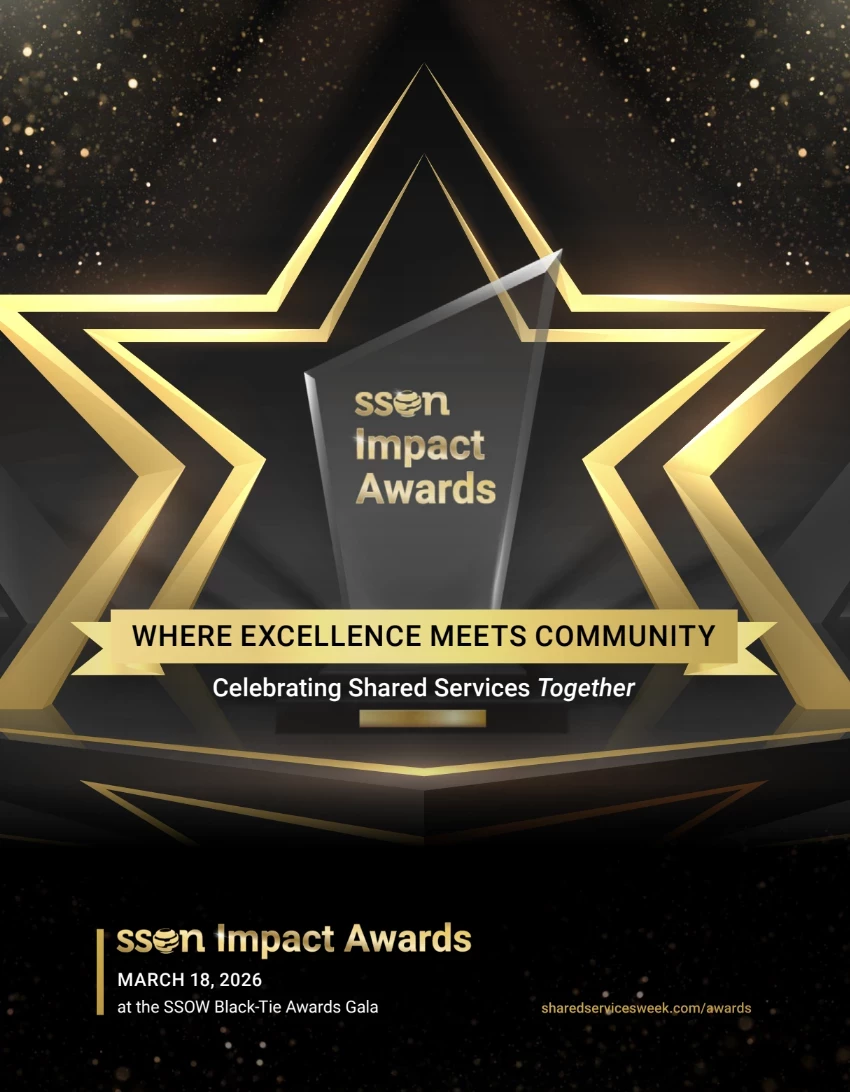Implementing Shared Services in a World Turned Upside Down:
A host of challenges, a wealth of opportunities
Add bookmark
Part 3: From Implementation to Service Delivery
According to the pioneering management theorist Peter F. Drucker, writing in 1954, “There is only one valid definition of a business purpose: to create a customer.” One might argue that for Shared Service organisations, the only one valid definition of business purpose is to retain their customers. If Shared Service organisations are ‘given’ their customers by higher management decree, they have to justify their existences from that moment forth by serving those customers well, relieving them of the burden of time-consuming transactions so that they can concentrate more actively on value-adding activities.
Success criteria
In the view of John Hall, the selection and management of the staff of a Shared Service Centre is as important a success criterion as is the choice and deployment of enabling technologies. “It’s essential to set high standards from the very start,” John explains. “This involves ensuring that the recruitment process is conceived to deliver the right balance of skills and experience throughout the Shared Services team, with a good mix of employees from within the parent organisation and new recruits drawn from outside it. Employees recruited from inside will bring with them important institutional knowledge and also personal connections. Employees recruited from outside will bring with them specific Shared Services skills and qualifications. Essential in both is an understanding of the potential represented by the Shared Services model, both for business efficiency and for personal professional development. A high degree of motivation, excellent attention to detail and a team mentality are all essential, and so the process for drawing up job specifications, advertising roles and interviewing candidates is a factor that will have a long-term influence on the overall success of any Shared Services organisation.”
John regards it as essential to get as many brains as possible working as productively as possible when a new Shared Service Centre is established. “This means getting people in perpetual learning and problem-solving mode at every level of the new organisation, and not just within the management team,” he stresses. “A Shared Service Centre is a factory of intelligent people, and their combined brainpower has to work at full capacity if high levels of process excellence and customer service are to be maintained.”
Train – and train again
Apart from the importance of effective induction and technical training programs, as outlined in the foregoing article in this series, employees at all levels require training in customer service and how to handle difficult situations. It is also important that they should have a deep understanding of the wider process landscape within which they are operating, and of the ‘big picture’ story of the operating entities they exist to serve. These considerations are all the more critical when, as during the COVID-19 pandemic, face-to-face interactions with customers and other stakeholders are impossible. Moreover, the fact that the implementation of Shared Services is often positioned by companies as part of a much wider and ongoing Continuous Improvement initiative means that the need for periodic further training never ceases.
Measurement and evaluation
At every stage of a Shared Services implementation, there will be a need to measure the effectiveness of the programme. Vassilis Kapoukinis advocates maintaining two dashboards – an ‘external’ one to measure customer satisfaction among the internal customer base and an ‘internal’ one to measure the performance of the project team itself.
Peter Villanyi notes that, in his experience, relatively few Shared Services organisations are very good at measuring their own effectiveness, and concedes that he himself has made mistakes in the course of an 18-year-long career in this field. “One of the problems is to decide what to do with the information you generate,” he explains. “Is it actionable? For if it isn’t, what value does it have?” Peter is now making use of a Global Business Services cockpit whose KPIs are structured so as to make the information they convey benchmarkable. “Different stakeholders look for different things,” says Peter. “If you can provide that information visually and in real time so that it offers an experience that users can really understand, then you have a measurement tool that is genuinely effective.”
The length of time that might reasonably be expected for the completion of a Shared Services implementation very much depends on the individual starting-point, says Vassilis. “It will differ between an organisation that is already highly centralised and one that is highly decentralised, and also depending on whether the implementation is a greenfield or a brownfield one.” That said, 12 months might be taken as a generally agreed absolute minimum, with 18 months a reasonable target for initial planning purposes.
Conclusion: A robust model
So, what has the experience of the COVID-19 pandemic taught the Shared Services sector? To an extent, it would seem to have reinforced much of what we already know: effective sponsorship, leadership and governance are essential at every stage of an implementation; the selection of enabling technologies is as critical as is the recruitment of appropriate personnel; targeted induction and training programs are essential; the effort of the initial implementation needs eventually to usher in a Continuous Improvement process as the Shared Service Centre moves from project mode to business-as-usual mode; and measurement tools only add value if they deliver genuinely meaningful and actionable information.
These lessons have been revalidated, however, against the background of – to use the word that shot to prominence right at the start of the pandemic – unprecedented operational challenges. The manner in which the industry has risen to those challenges demonstrates the remarkable effectiveness of many of the communication technologies now available to us, the importance of investing in the very best process technologies, and the resilience of the human spirit in the face of potentially annihilating physical threat.
As lockdowns lift around the world, we should not expect a straight return to the ‘old’ normal. Nor should we envisage a perpetual continuation of working from home. Various hybrid combinations of office-based working and remote working will doubtless be trialled, and no doubt there will be winners and losers among these models. But the jury, even if only able to convene on Zoom, is likely to conclude that the Shared Services model is in rude good health.
In the words of Peter Villanyi, “The Shared Services model has been with us for 20 to 30 years. On the occasions when it does fail, that’s generally attributable to a failure of mindset.” John Hall puts it rather more directly: “It’s all about knowing what you’re trying to achieve and being consistent in your efforts to achieve it. The Shared Services model works. Get it wrong at your peril.”
Further information
Bunzl
Bunzl Group plc is a growing and successful international distribution group with operations in the Americas, Europe, and Asia Pacific. Focused on providing customised solutions to B2B customers, Bunzl has operations in more than 30 countries and on 5 continents. The group’s revenue and adjusted operating profit for the year ended 31 December 2020 were £10.1bn and £778.4m respectively. Bunzl Group plc is headquartered in London, UK, and listed on the London Stock Exchange FTSE100 Index.
www.bunzl.com
Imerys
The world leader in mineral-based specialty solutions for industry, with €3.8 billion revenue and 16,400
employees in 2020, Imerys delivers high value-added, functional solutions to diversified set of industrial sectors, from processing industries to consumer goods. The Group draws on its knowledge of applications, technological expertise and its material science know-how to deliver solutions based on beneficiation of its mineral resources, synthetic minerals and formulations.
www.imerys.com
ConvaTec
ConvaTec is a global medical products and technologies company focused on therapies for the management of chronic conditions, with leading market positions in advanced wound care, ostomy care, continence and critical care, and infusion devices. ConvaTec’s products provide a range of clinical and economic benefits including infection prevention, protection of at-risk skin, improved patient outcomes and reduced total cost of care. ConvaTec has 8,500 employees and does business in more than 100 countries.
www.convatecgroup.com
Jonathan Steffen
Jonathan Steffen is a communication strategist with extensive international experience in the interrelated fields of corporate communications, change communications and B2B communications.
www.joanthansteffenlimited.com






























